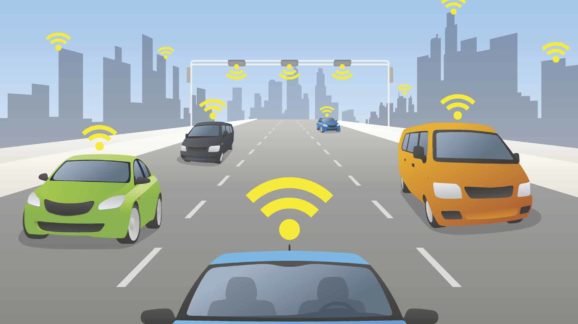California’s Proposed Automated Vehicle Regulations under Fire

 Today, the California Department of Motor Vehicles held a hearing on its proposed rules that would govern automated vehicle testing and public deployment in the state. In advance of the hearing, the Competitive Enterprise Institute submitted a comment letter criticizing the DMV’s proposal to codify a key element of the nonbinding federal guidance document, Federal Automated Vehicles Policy, something the federal guidance explicitly cautions states against doing. CEI also joined a coalition comment letter with the R Street Institute, TechFreedom, and International Center for Law & Economics touching on several other problems with the DMV’s proposed regulations—from permitting to privacy. Our coalition previously submitted comments in October 2016 on the DMV’s then-draft regulations.
Today, the California Department of Motor Vehicles held a hearing on its proposed rules that would govern automated vehicle testing and public deployment in the state. In advance of the hearing, the Competitive Enterprise Institute submitted a comment letter criticizing the DMV’s proposal to codify a key element of the nonbinding federal guidance document, Federal Automated Vehicles Policy, something the federal guidance explicitly cautions states against doing. CEI also joined a coalition comment letter with the R Street Institute, TechFreedom, and International Center for Law & Economics touching on several other problems with the DMV’s proposed regulations—from permitting to privacy. Our coalition previously submitted comments in October 2016 on the DMV’s then-draft regulations.
The first speaker at the hearing came from the San Francisco government. He endorsed the flawed, precautionary National Association of City Transportation Officials’ “Policy Statement on Automated Vehicles,” and urged the DMV to issue stronger validation requirements for manufacturers. The problem with this approach is that auto safety regulation in the United States is built around manufacturer self-certification and is overseen and enforced by the National Highway Traffic Safety Administration within the U.S. Department of Transportation.
The San Francisco nanny-state approach to automated vehicle regulation essentially calls for California to institute pre-market approval, flying in the face of longstanding federal law. If the DMV listens to San Francisco bureaucrats, the likely outcome will be increased pressure on Congress to fully preempt states on vehicle safety and stripping states of all meaningful authority to regulate vehicle safety. A federal preemption law would also likely prevent state courts from evaluating tort liability claims as they relate to Federal Motor Vehicle Safety Standards. In this respect, misguided overregulation from states like California could spur the feds to fully occupy the auto safety policy field and limit the ability of states to regulate in the first place.
Fortunately, developers, insurers, and others harshly criticized the DMV’s proposed regulations as too stringent. They’re right, as our coalition highlights in our comments.
Excessively precautionary regulation that delays or increases the cost of deployment of automated vehicles—assuming computer-directed driving is safer than human-directed driving, which is quite achievable given that most crashes are primarily the result of human behavior—translates into forgone safety benefits. That means more crashes, property damage, injuries, and fatalities that would otherwise have not taken place. As I wrote in October 2016 when we submitted our comments on the draft regulations, “Unless they cease attempting to involve their state in matters of federal responsibility, California’s politicians and bureaucrats will have blood on their hands.”